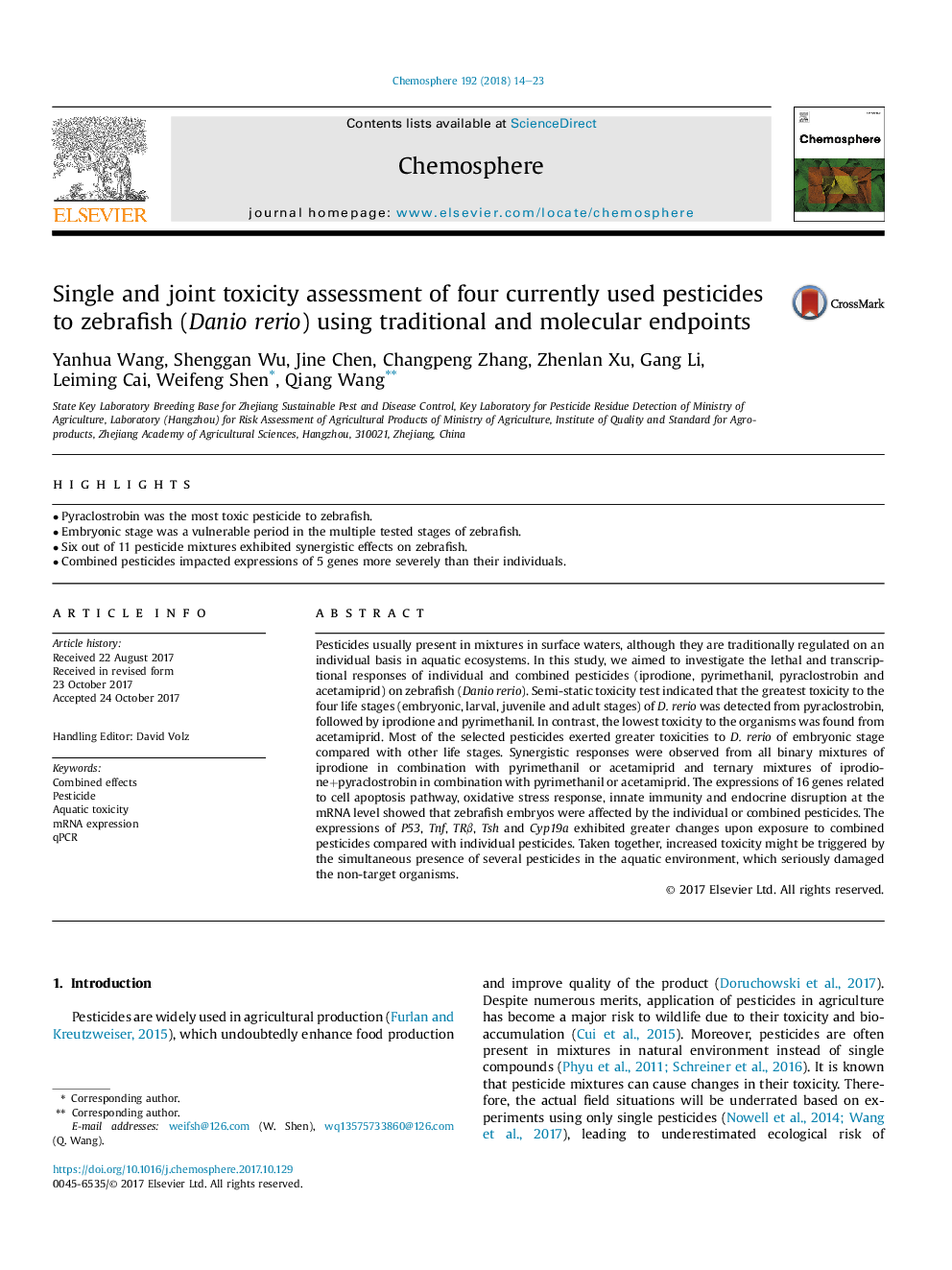| Article ID | Journal | Published Year | Pages | File Type |
|---|---|---|---|---|
| 8852760 | Chemosphere | 2018 | 10 Pages |
Abstract
Pesticides usually present in mixtures in surface waters, although they are traditionally regulated on an individual basis in aquatic ecosystems. In this study, we aimed to investigate the lethal and transcriptional responses of individual and combined pesticides (iprodione, pyrimethanil, pyraclostrobin and acetamiprid) on zebrafish (Danio rerio). Semi-static toxicity test indicated that the greatest toxicity to the four life stages (embryonic, larval, juvenile and adult stages) of D. rerio was detected from pyraclostrobin, followed by iprodione and pyrimethanil. In contrast, the lowest toxicity to the organisms was found from acetamiprid. Most of the selected pesticides exerted greater toxicities to D. rerio of embryonic stage compared with other life stages. Synergistic responses were observed from all binary mixtures of iprodione in combination with pyrimethanil or acetamiprid and ternary mixtures of iprodione+pyraclostrobin in combination with pyrimethanil or acetamiprid. The expressions of 16 genes related to cell apoptosis pathway, oxidative stress response, innate immunity and endocrine disruption at the mRNA level showed that zebrafish embryos were affected by the individual or combined pesticides. The expressions of P53, Tnf, TRβ, Tsh and Cyp19a exhibited greater changes upon exposure to combined pesticides compared with individual pesticides. Taken together, increased toxicity might be triggered by the simultaneous presence of several pesticides in the aquatic environment, which seriously damaged the non-target organisms.
Related Topics
Life Sciences
Environmental Science
Environmental Chemistry
Authors
Yanhua Wang, Shenggan Wu, Jine Chen, Changpeng Zhang, Zhenlan Xu, Gang Li, Leiming Cai, Weifeng Shen, Qiang Wang,
